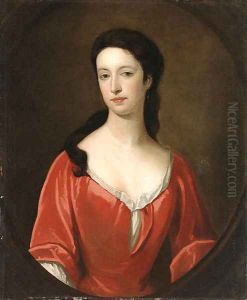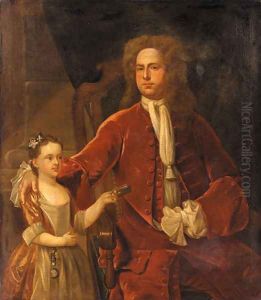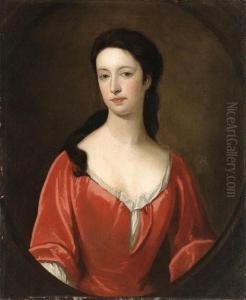John Smybert Paintings
John Smybert, sometimes spelled Smibert, was a Scottish-American artist who played a significant role in the development of colonial American art. Born in Edinburgh, Scotland, in 1688, Smybert began his artistic career as an apprentice house painter. This humble beginning did not limit his aspirations, and he eventually traveled to London to further his artistic training. It was there that Smybert honed his skills and became influenced by the works of the great European masters.
After his time in London, Smybert made a pivotal move to Italy, where he studied the works of the Italian Renaissance. This period was crucial for his artistic development, as he absorbed the techniques and styles of famed artists such as Raphael and Titian. His talent began to attract attention, and he received commissions to copy works by these masters. These experiences significantly shaped his painting style, which combined the grand manner of European painting with his own distinctive approach.
Smybert's career took a defining turn when he decided to venture to the New World. In 1728, he accompanied Bishop Berkeley to America, who had a failed mission to open a college in Bermuda. Berkeley's mission may not have succeeded, but for Smybert, it was the beginning of a new chapter. He settled in Boston, Massachusetts, which was becoming a cultural and economic hub in the colonies. There, he became a central figure in the art community, and his studio became a gathering place for local artists.
In America, Smybert's work included portraits, which were in high demand among the colonial elite, as well as religious and historical paintings. His most famous work is likely the 'The Bermuda Group' (also known as 'Dean Berkeley and His Entourage'), which depicted Berkeley and his associates and showcased Smybert's skill in group portraiture. This painting is considered an important piece in the history of American art, as it was one of the first of its kind in the colonies and illustrated the aspirations and intellect of the New World's emerging leadership.
Smybert's influence extended beyond his own works. He was a teacher and mentor to a generation of American artists, including John Trumbull, who would go on to be a notable painter of the American Revolutionary period. Smybert's blend of European artistry with American sensibilities helped lay the groundwork for a distinct American artistic tradition. He continued to work and teach in Boston until his death in 1751. Today, John Smybert is remembered as a pioneer of American art, a figure who bridged the Old World and the New, and whose legacy is reflected in the generations of American artists that followed.


